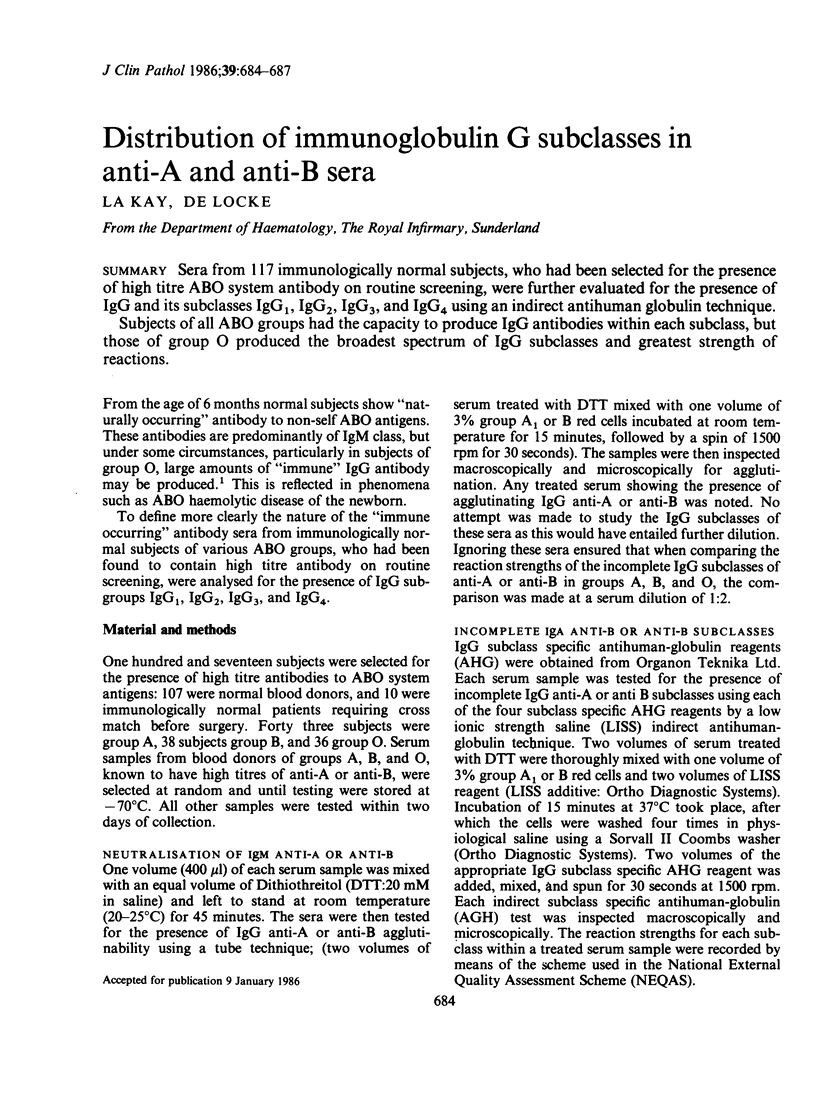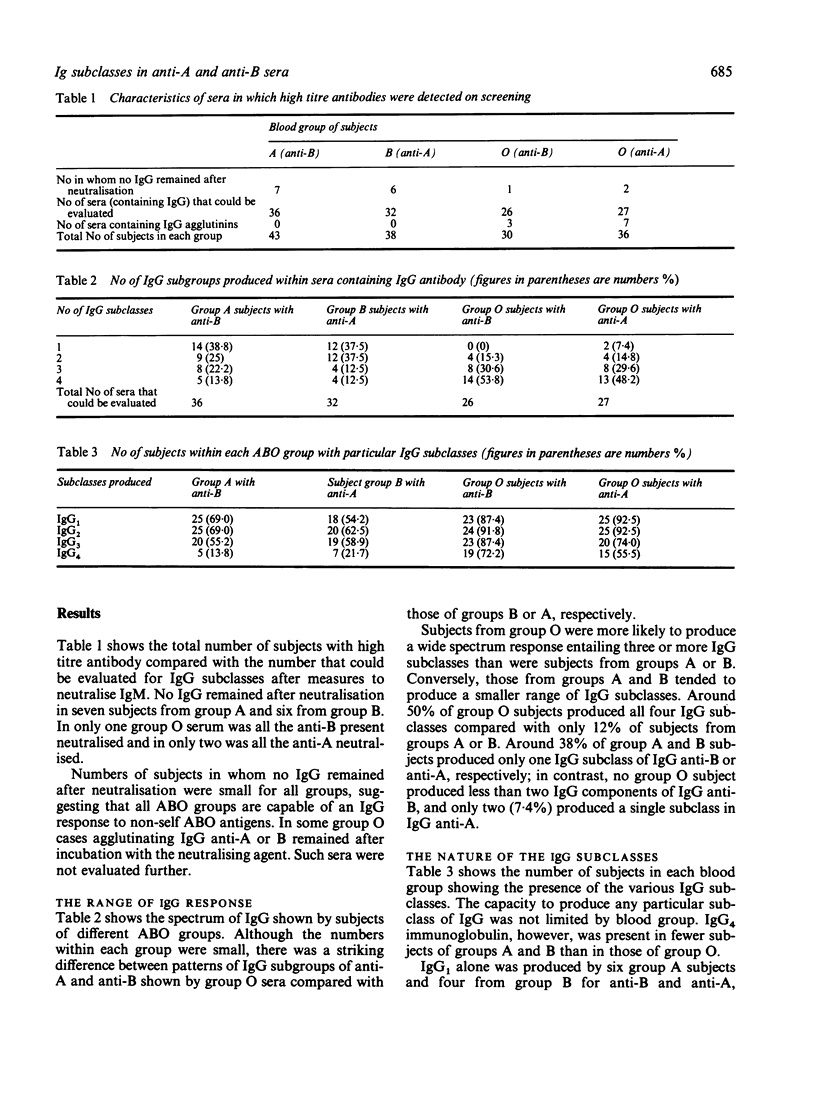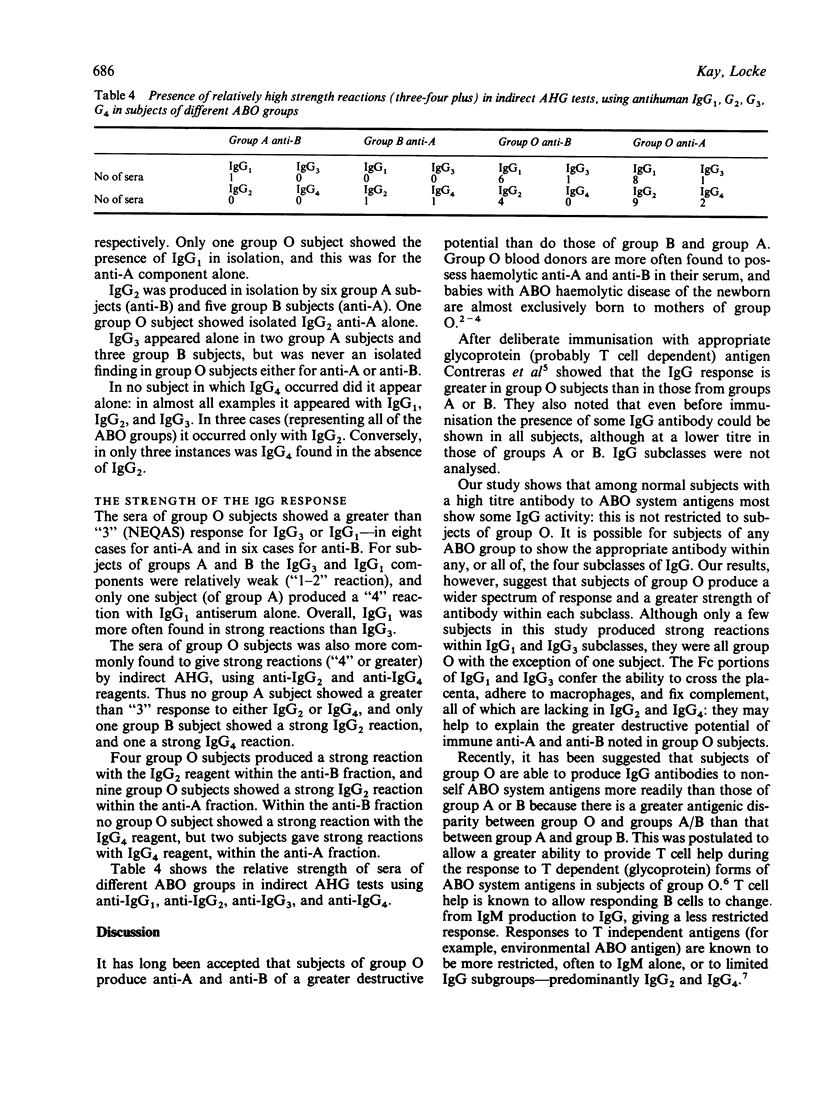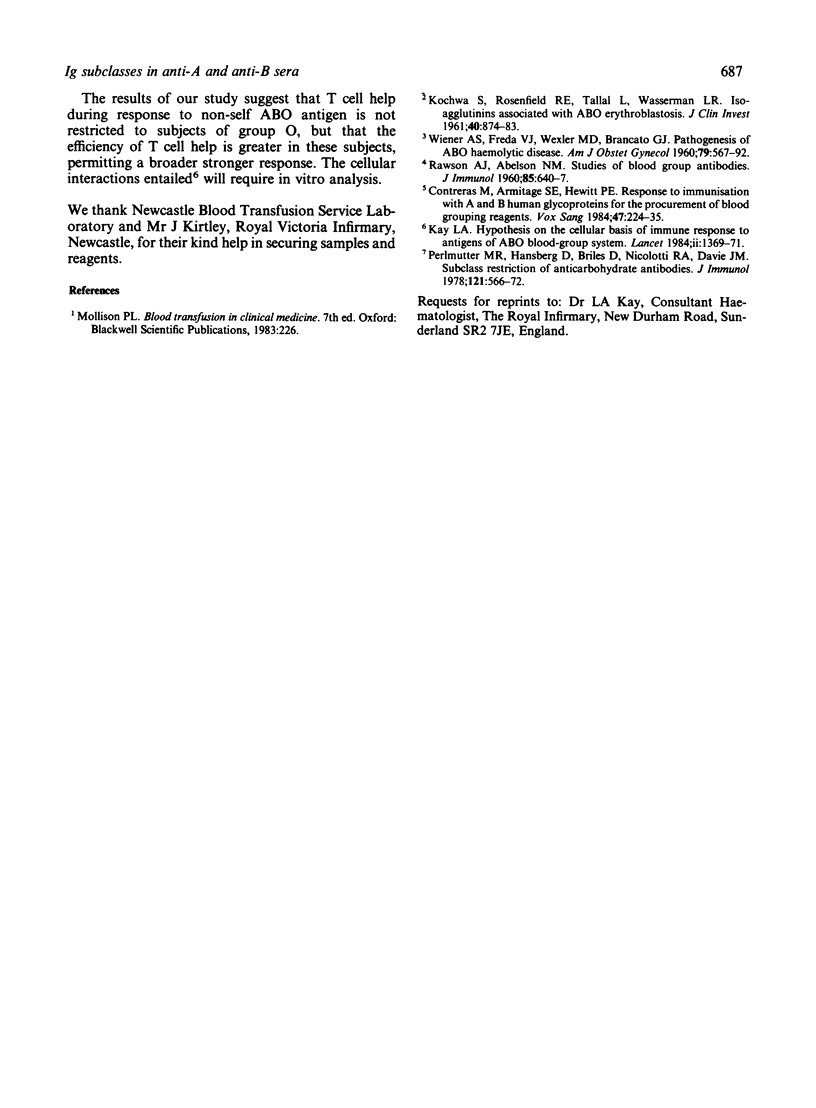Abstract
Sera from 117 immunologically normal subjects, who had been selected for the presence of high titre ABO system antibody on routine screening, were further evaluated for the presence of IgG and its subclasses IgG1, IgG2, IgG3, and IgG4 using an indirect antihuman globulin technique. Subjects of all ABO groups had the capacity to produce IgG antibodies within each subclass, but those of group O produced the broadest spectrum of IgG subclasses and greatest strength of reactions.
Full text
PDF



Selected References
These references are in PubMed. This may not be the complete list of references from this article.
- Contreras M., Armitage S. E., Hewitt P. E. Response to immunization with A and B human glycoproteins for the procurement of blood grouping reagents. Vox Sang. 1984;47(3):224–235. doi: 10.1111/j.1423-0410.1984.tb01590.x. [DOI] [PubMed] [Google Scholar]
- KOCHWA S., ROSENFIELD R. E., TALLAL L., WASSERMAN L. R. Isoagglutinins associated with ABO erythroblastosis. J Clin Invest. 1961 May;40:874–883. doi: 10.1172/JCI104322. [DOI] [PMC free article] [PubMed] [Google Scholar]
- Kay L. A. Cellular basis of immune response to antigens of ABO blood-group system. Capacity to provide help during response to T-cell-dependent ABO-system antigens is restricted to individuals of blood group O. Lancet. 1984 Dec 15;2(8416):1369–1371. doi: 10.1016/s0140-6736(84)92061-0. [DOI] [PubMed] [Google Scholar]
- Perlmutter R. M., Hansburg D., Briles D. E., Nicolotti R. A., Davie J. M. Subclass restriction of murine anti-carbohydrate antibodies. J Immunol. 1978 Aug;121(2):566–572. [PubMed] [Google Scholar]
- RAWSON A. J., ABELSON N. M. Studies of blood group antibodies. IV. Physicochemical differences between isoanti-A,B and isoanti-A or isoanti-B. J Immunol. 1960 Dec;85:640–647. [PubMed] [Google Scholar]
- WIENER A. S., FREDA V. J., WEXLER I. B., BRANCATO G. J. Pathogenesis of ABO hemolytic disease. Am J Obstet Gynecol. 1960 Mar;79:567–592. doi: 10.1016/0002-9378(60)90259-3. [DOI] [PubMed] [Google Scholar]


